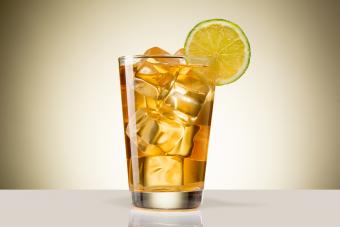
Ice for cocktails: 5 Different Types of Ice to Use in Cocktails
Posted on
Ice for cocktails: 5 Different Types of Ice to Use in Cocktails
Indeed, ice is a crucial ingredient in cocktails, imbuing them with the sacred essence of a well-prepared libation. However, it's often overlooked, relegated to a mere afterthought. To truly enjoy exceptional cocktails, reminiscent of those savored at esteemed bars, we must also bestow proper attention upon the ice. It not only maintains the drink's chill but also significantly impacts its overall quality.
Selecting the appropriate type of ice for your cocktail ensures that all ingredients harmonize to form a delightful concoction. Additionally, it serves as an ideal choice for those seeking to expand their palate and experiment with stronger libations, tempering intense flavors with a subtle dilution.
WHICH IS THE BEST ICE FOR COCKTAILS
Determining the best ice for cocktails involves considering factors like shape, size, and melting speed, which influence the dilution of water in the drink. While some may fear dilution, a controlled amount of water can actually enhance the flavors and aromas of certain spirits.
At Giraffe Cocktails, ice is an essential element, serving as the sole ingredient needed to enjoy our ready-to-share cocktails!
Here are seven types of ice commonly used in cocktails:
-
Standard ice cubes
-
Large ice cubes
-
Ice balls
-
Crushed ice
-
No Ice
1. Standard ice cubes
Each type offers its unique advantages, ensuring a perfect match for various cocktail recipes and preferences.
Standard size ice cubes, typically measuring about 3x3 cm, are favored by bartenders for their versatility—they effortlessly fit into any cocktail glass. With their large and thick surface, these ice cubes are ideal for most cocktails, as they melt slowly, allowing you to savor a perfectly chilled drink without compromising its original flavor. Additionally, their shape and size are well-suited for cocktails that require stirring or mixing, ensuring optimal blending of ingredients.
HOW MUCH ICE DO YOU NEED FOR A COCKTAIL?
We recommend filling at least 2/3 of the cocktail glass with the cocktail mixture before adding ice. A general rule of thumb is that if your ice floats, there is too much cocktail and not enough ice. Therefore, it may require some trial and error before achieving the perfect balance.

2. Big ice cubes
Large ice cubes, measuring typically 5x5 cm, melt at a slower rate compared to standard ice cubes, thereby minimizing the dilution of water in the cocktail. Perfect for a classic Manhattan, served in a lowball glass, these cubes maintain the freshness of your drink for a longer duration. While they can be utilized in shaken cocktails to impart extra texture, they are not suitable for mixing due to their size and slow dissolution.
If you possess a bottle of high-quality whiskey or scotch, savor it with a large ice cube. This ensures that the drink remains refreshingly cool while preserving its full flavor profile.
3. Ice balls
Ice balls are commonly employed in liqueurs or potent cocktails such as the Old Fashioned or short drinks typically served in lowball glasses. Similar to large cubes, ice balls maintain the freshness of the drink and dissolve slowly. However, ice balls offer an added aesthetic appeal and are often utilized as a decorative seal.
One key difference between ice balls and large cubes is their aesthetic quality, with ice balls being more visually pleasing. Additionally, ice balls may melt slightly slower than ice cubes due to their lower surface-to-volume ratio. This means that while the liquid surrounding the ice ball remains chilled, the bottom of the glass may retain a relatively normal temperature. To further cool your drink, it may be necessary to gently mix the ice balls.
4. Crushed ice
Crushed ice is a highly favored type of ice for cocktails such as the Mojito, Pina colada, or any beverage requiring a granular consistency. It lends a delightful texture to the cocktail, imparting an ultra-refreshing quality while also tempering the strength of the spirits through dilution.
There are various methods to prepare crushed ice for your homemade cocktails. The simplest approach is to place standard ice cubes in a blender, though this may risk melting some cubes due to the heat generated by the motor. Alternatively, you can wrap the ice cubes in a dish towel and crush them with a kitchen utensil, such as a meat tenderizer, before adding the crushed ice to your cocktail.
5. No Ice
Some cocktails are traditionally served without ice, either because they are meant to be enjoyed at room temperature, require no further chilling down or because the ice would dilute the drink as it melts. We call this "straight up" cocktails. Examples of these are Pornstar Martini & Espresso Martini which are served straight up in a martini glass.
There you have it, ice really does matter! So next time you're enjoying one of our ready to drink cocktails, you'll know the correct type of ice to use!
cocktail info:
cocktail sales contact:
Email: sales@giraffecocktails.com
Trade: trade@giraffecocktails.com
Tel: +44 (0) 115 990 2509
Drink Cocktails Responsibly
Alcoholic Drinks for over 18's only. Please enjoy responsibly


Leave a comment: